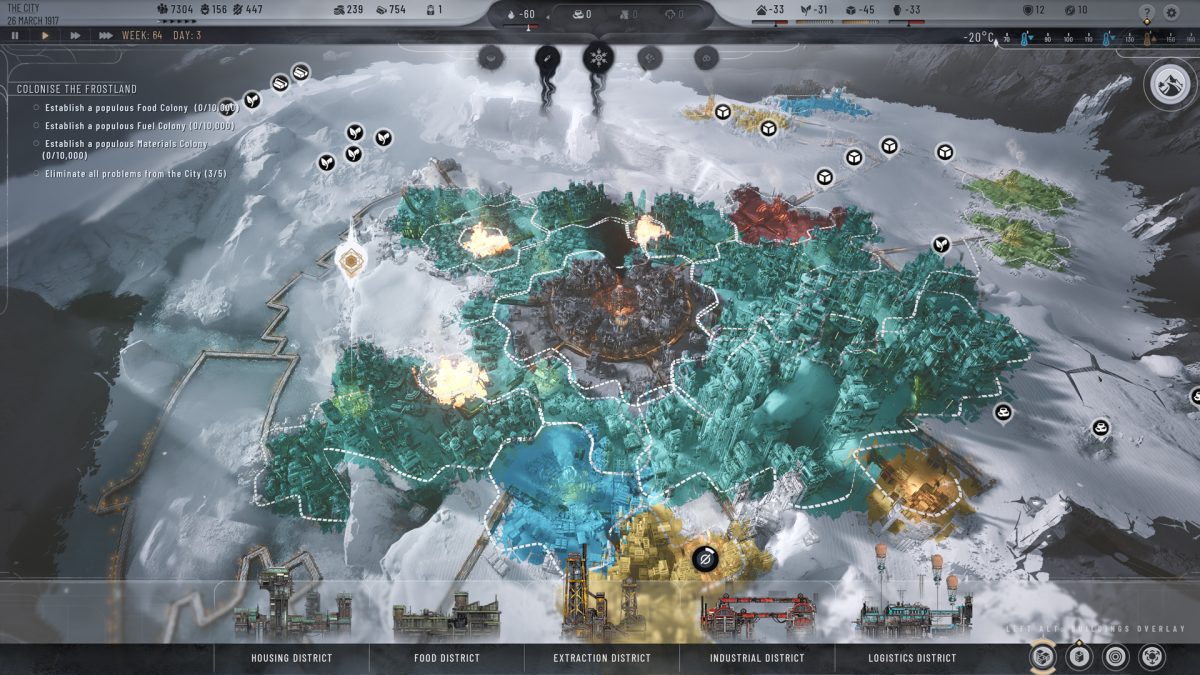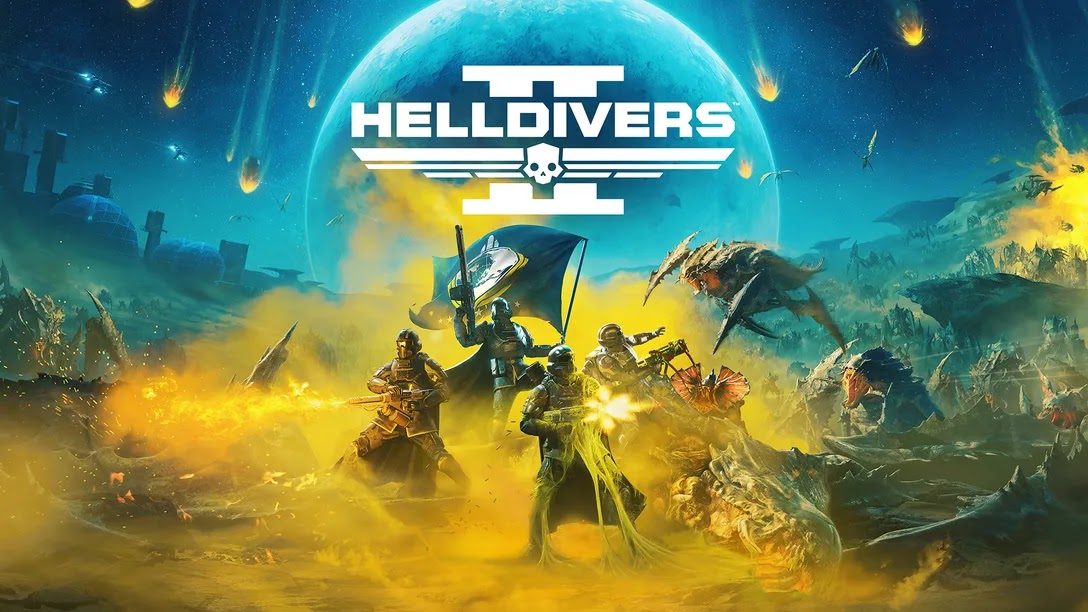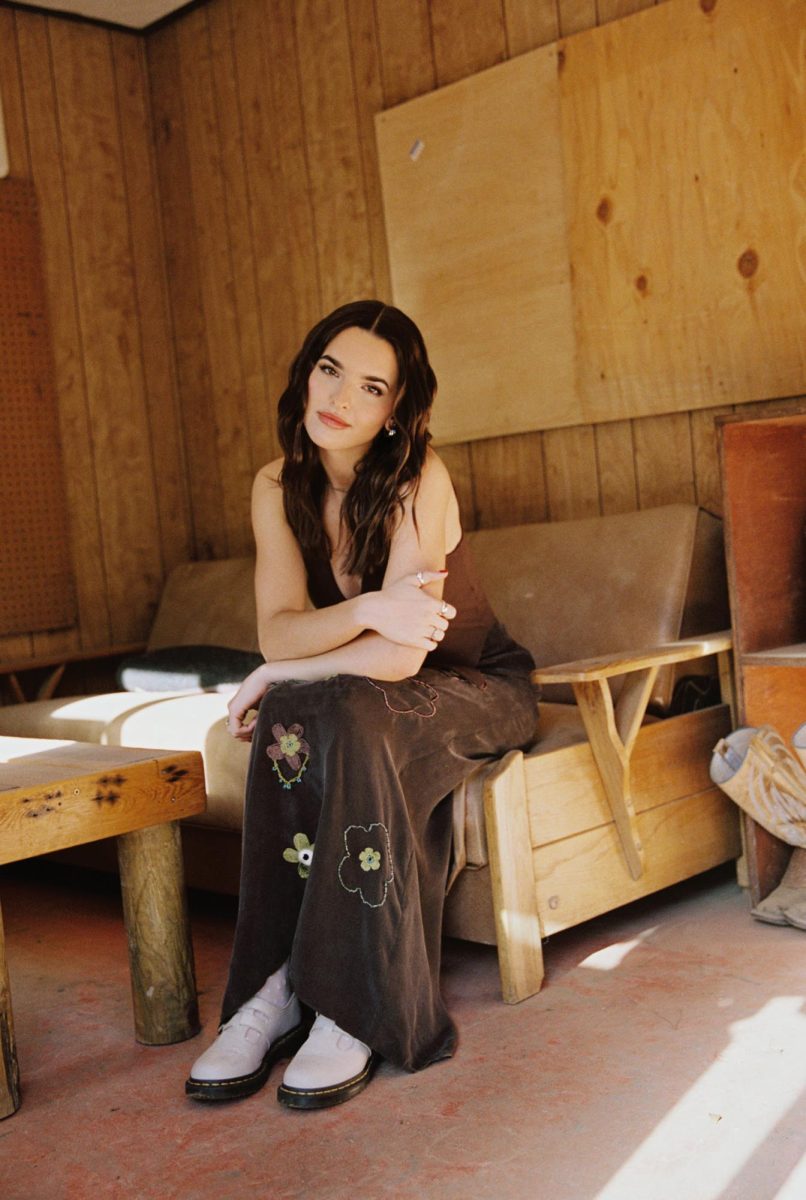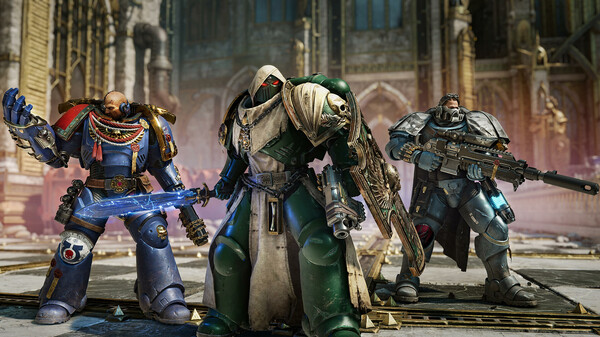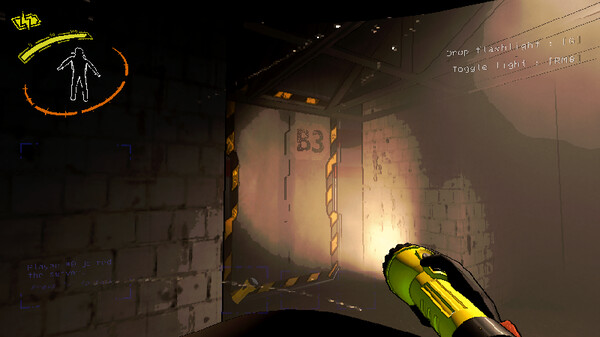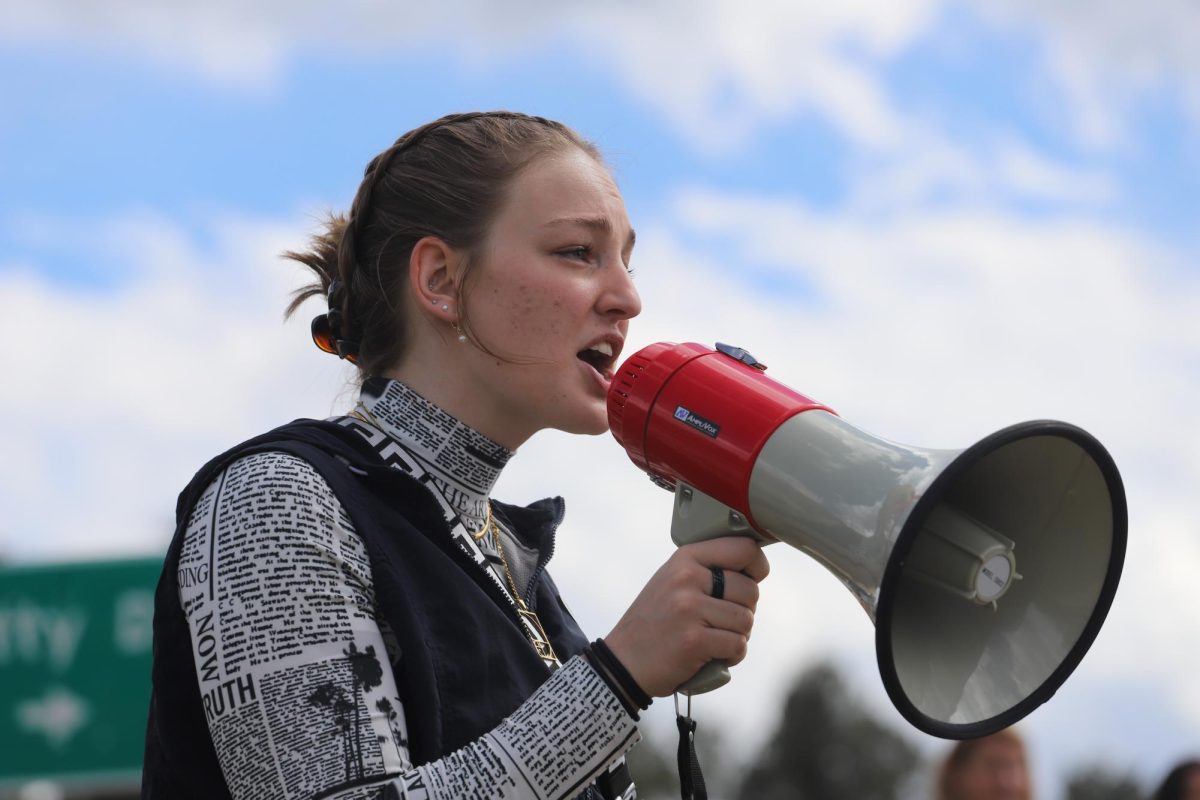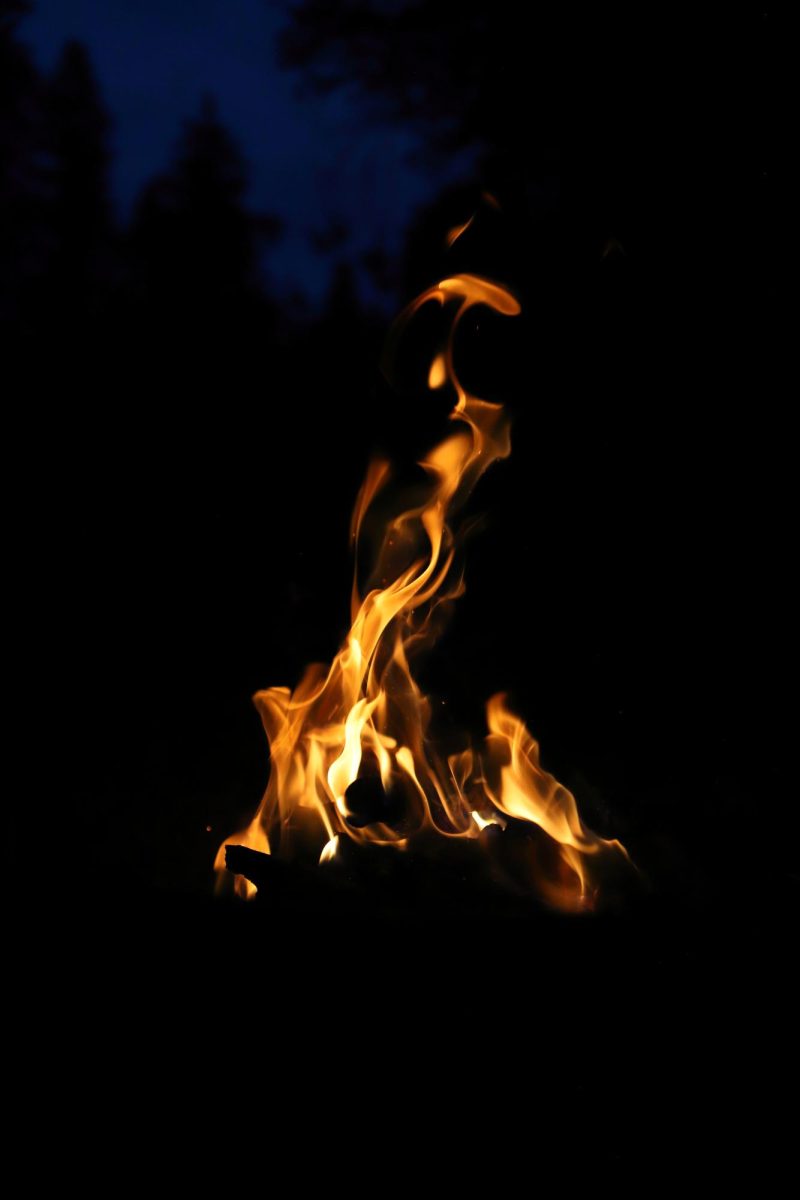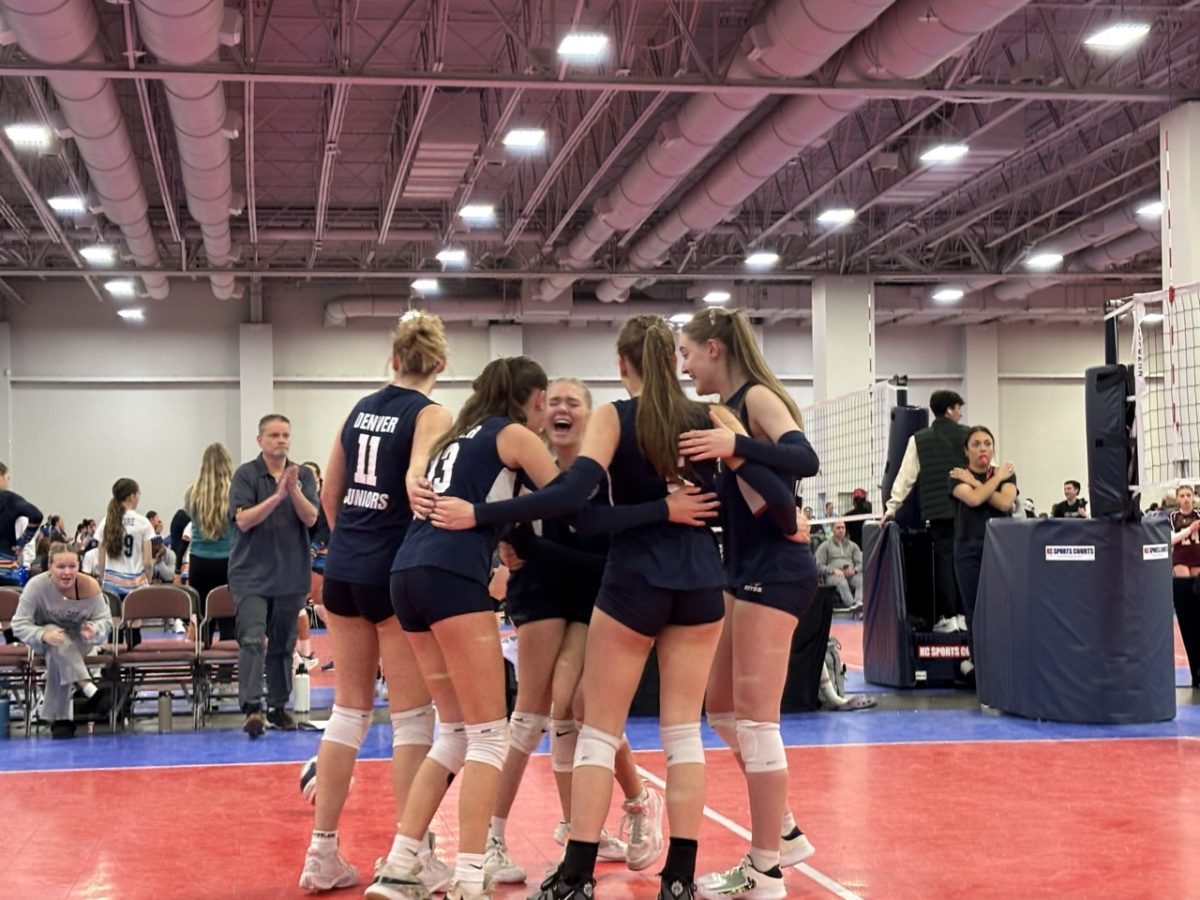The Council reconvenes once more to debate on the proposed labor law. Delegates squabble over petty grievances as their people fall ill, starve, or freeze in sub-zero temperatures. The remaining citizens of the city hide in their shelters as the temperature falls again. The coal is running out and the people are ready to revolt, but the discovery of oil creates a spark of hope in the desolate tundra. The old world died under a mountain of snow, and as the Steward, it is up to you to pick up the pieces and decide whether to rebuild it or create something new. Frostpunk 2 is the sequel to the award-winning survival city-builder Frostpunk, which was released in 2018. The latest title, which was released in September of 2024, takes place 30 years after the first game. You play as the Steward, the new leader of the last city on Earth. The game is set on a much larger scale, managing a city rather than a simple settlement. In addition to the scale increase, players must now contend with internal politics as well as the lethal cold, forcing players to make tough decisions to keep humanity alive.
The Frostpunk games take place in an alternate timeline where in 1886 the world began to freeze for unknown reasons. This caused the death of nearly all life on Earth as the temperature kept dropping, eventually leading to civilization perishing under endless snowfall, starvation, and temperatures that can drop as far as -150 Celsius, cold enough to freeze the atmosphere out of the sky. However, the most powerful nations at the time foresaw this a few months in advance and built several generators that could heat massive amounts of land. They sent these into the northern Arctic, where some plant and animal species might have survived and where oil and coal were plentiful. The vast majority of these generators failed, with only a handful surviving in the coming years. In the first game, the player built and led New London, a British generator city. In Frostpunk 2, the city has grown and its needs have expanded. Coal is no longer a viable form of fuel and its people are divided. New London must not fall, whether to cold or to internal strife.

Frostpunk 2 has a similar objective to the first game, which is to keep the city running, growing, and happy. The basic mechanics, however, are different enough to keep the gameplay fresh and interesting. To survive, citizens need food, shelter, and warmth. If these three needs are neglected, the citizens may rise and exile the Steward to the barren tundra. However, these three things are in short supply, and the player must decide what to focus on and what to ignore for the time being. However, this is not the most pressing issue. The rush to switch from coal to oil and to produce enough oil to keep the city alive is the most important task in the game, as without fuel, the frost sets in and the city begins to die. To help the Steward rule, the player may research technologies, pass laws, and explore the wasteland, all of which can provide benefits for the city.
The new political system is perhaps the largest addition to the game. Frostpunk 2 introduces a council of delegates that acts as a check to the power of the Steward, and the player must appease, ally, suppress, or destroy them to pass laws and keep the masses happy. The various factions each have their own goals and preferred laws or technologies, and as the population of New London grows, so too does the variety of different beliefs and values. Laws have been expanded as well, from societal rules to economic regulations, there are dozens of laws that the Steward can suggest and vote on. An additional feature is the ability to create new settlements in the Frostland that can provide New London with resources it may not have much access to. The last major new mechanic is Whiteouts. Whiteouts are occasional storms that cause the temperature to drop to such low levels that citizens cannot even leave their homes without freezing to death in moments, let alone work. This means that players must collect resources in preparation for these superstorms so that the city can run without workers for the duration of the Whiteout.
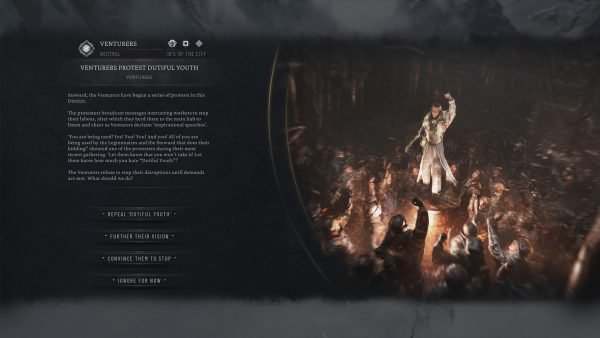
Frostpunk 2’s graphics are very good and do a great job of capturing the “feel” of the original Frostpunk. Its core gameplay loop is entertaining and the variety of different paths the player can choose for New London and its society are numerous and cater to several different playstyles. Its new settlement system gives players different maps to build their cities on while the number of researchable technologies can mean that no playthrough will be the same. However, while Frostpunk 2 excels in many aspects, it is not perfect. The building systems are bare-bones and too simplistic, with it just being a simple point-and-click placement system and is always the same. Additionally, the early game only has a few viable ways to play, with little difference between playthroughs. While an entire run may have differences, the grand strokes of every game will be the same; Get housing, get food, and get oil.
Frostpunk 2 is a good game. While it is a sequel to the original, it is very different from it in most aspects. It is far more large-scale and is less focused on survival than on stability. It is no longer enough just to survive, now New London wants more. For fans looking for a game like the first Frostpunk, the second game will likely not give satisfaction. But for fans looking for a city builder with in-depth politics, laws, and societal mechanics, then Frostpunk 2 might be just what you want.
